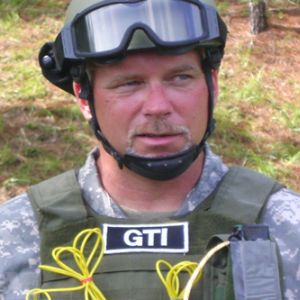|
Looking Beyond the Barrel of the Gun
August 17, 2011 By Dennis O'Connor
 Dennis O'Connor is the Director of Training for the Government Training Institute. Mr. O'Connor's areas of expertise; law enforcement, Special Weapons and Tactics, drug, vice and organized crime and the training of police canines among others that are complimented by his over twenty five years of Law Enforcement service. Spending my entire adult life either in the military or law enforcement, I have learned or I thought I had learned to be very conscious of my surrounding. In reality what I did learn was to be vigilant in anticipation of a violent act or crime to be committed. What I never spent time on, was once the violent act or crime was committed and a response was required, how to deal with processing.
Over the last four years I have had the greatest opportunity to train some of the best tactical officers in the law enforcement community as well as first responders. Regardless of whom the students are, the one most notable down fall, is the ability to see past the end of their gun and to process what they see.
In a high stress environment, we know that the sympathetic nervous system takes over and tunnel vision begins to occur. The question that arises is how do we as trainers teach the student how to process everything they see, prioritize and act accordingly.
The following is a list I have compiled over my years of being a trainer that I feel may help trainers and individual operators:
- Stand up straight - So too often when operators move, they bend over forcing them to look down or at the back of the legs of the operator in front of them. You can see more by standing up straight, allowing you to breathe easier and oxygen to flow to the brain.
- Practice Combat Breathing - Breath control reduces your heart rate by controlling respiration. 2 count in through the nose, 2 count hold, 2 count out through the mouth.
- Off set yourself - When operators move in a stack , they move in a linear formation or what we refer to as "ducks in a row" Outside of the first two operators, all other operators should attempt to offset themselves or at least look past other operators and process down range.
- Don't duplicate work - Operators have a tendency to focus on the same area of responsibility when moving on target. When moving in a tactical formation, every operator should be processing what's in front of them but never duplicating an area of responsibility.
- Keep your head on a swivel - It seems as soon as an operator puts on body armor and a ballistic helmet or enters a stressful environment, they seem to not be able to turn their heads to process their surroundings. Having the ability to turn your head enhances your ability to process more area and lessens the degree of tunnel vision.
- Stay out of your sights - An operator's optics on their weapon systems is like a magnet to the eye. Realize that you have just narrowed your world down to tiny window. By staying above your sights allows an operator to process more and most importantly to see a person's hands.
- Trust what you see - I have been told by operators that during some point in their training, they were instructed to focus on one particular area and not to look anywhere else. We must remember that in a tactical environment we are looking for the bad guy. When processing areas of responsibility, if there is nothing there start looking somewhere else.
- Work your angles - While processing down range, don't be afraid to cheat to win. While moving down hallways or making room entries, manipulate your angles to your advantage to see into rooms as you approach and prior to entries. It's better tactically to identify suspects or persons without being right on top of them.
As in any training, all steps need to be taken in a crawl, walk, and run phase. During each phase stressors need to be added to increase the heart rate of each operator, forcing their body into a sympathetic nervous response. With proper corrections and repeating scenarios, you are conditioning the operator to work and process under a stressful environment. This type of training conditions the operator not to become so overwhelmed in an actual stressed environment, allowing him to process better.
|
